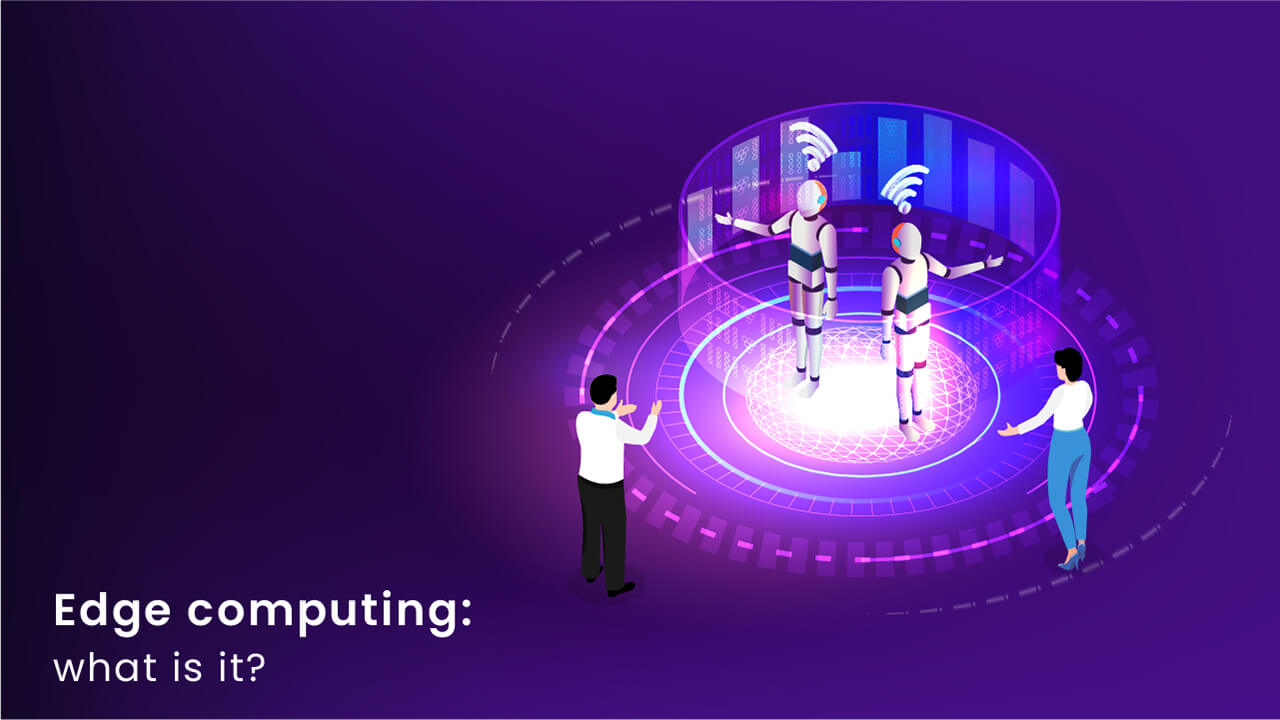With a rising emphasis on processing data near to users, edge computing boosts speed and real-time responses. Contrary to centralised data centres, edge computing brings processing capacity close to the point of use, allowing improved asset management and interactive experiences. Self-driving cars, autonomous robotics, and smart retail are some examples that provide quicker insights and better interactions.
Edge may consist of the following elements:
Edge Devices:
- Smart Devices: Collect and process data locally, like phones and smart speakers.
- IoT Devices: Include sensors, appliances, and connected devices for local data processing.
- Robots and Vehicles: Autonomous systems capable of real-time decision-making.
- POS Systems: Manage transactions and interactions at retail locations.
Network Edge:
- 5G Integration: Utilizes 5G for low-latency, high-speed connectivity.
- Diverse Applications: Enables projects like remote surgery and smart cities.
- Responsiveness Balance: Bridges the gap between cloud and local processing for optimal speed.
On-Premises Infrastructure:
- Servers/Containers: Manage local computing, virtualization, and applications.
- Routers: Facilitate data transfer between edge devices and the cloud.
- Hubs/Bridges: Connect and exchange data among local edge devices.
What makes edge computing so crucial?
The present dominance of edge computing in important industries including healthcare, manufacturing, and retail emphasises its contribution to providing low-latency, independent solutions for crucial operations. Its ability to alter several sectors and services is what really excites. Edge computing improves retail, enables employee training, and promotes safer settings by seamlessly fusing the digital and physical worlds. This dynamic potential has a significant influence on a variety of sectors, from customer engagement to manufacturing and back-office operations, by accelerating innovation, hastening product introductions, and unlocking new income sources.
Edge Computing: Leading Changes Using Synergistic Technologies
By seamlessly merging centralised and distributed infrastructures and collaborating with cloud technologies to produce cutting-edge experiences, edge computing is ushering in a new age. To provide real-time responsiveness, this paradigm makes use of locally generated data that is close by, effectively handling sensitive information, and lowering data transfer costs. Complementary technologies that increase its potential and capabilities are essential to its progress.
Important technological partnerships:
- The Seamless Integration of 5G: 5G technology guarantees the transmission of crucial control messages for edge devices’ autonomous decision-making. It enables the best software-defined network topologies by bridging the gap between edge and internet backhaul.
- IoT and Proximity: The close proximity of edge computing to connected sources and IoT devices improves security and registration, allowing for more efficient data processing.
- Flexibility of containerization: Regardless of device variances, settings, or capabilities, containers provide standardised environments for the deployment of applications.
- This design, known as the “Service and Data Mesh,” makes it possible to distribute and query data and services across edge containers and data storage, streamlining bulk inquiries and maintenance.
- SDN:software-defined networking, enables users to create unique overlay networks that effectively link edge devices to one another and the cloud.
- Impact of Digital Twins: By converting domain-specific information into edge applications and improving accuracy and relevance, digital twins revolutionise setup and deployment.
Applications and benefits of edge computing
Businesses will be able to reinvent experiences with the help of edge and cloud. Manufacturing and Internet of Things are only a small portion of the possible uses for edge computing. Edge may be used to encourage quick decisions and enhance user experiences by boosting relevance at every touchpoint. Now, with the support of the broader cloud backbone, edge is assisting in the creation of new insights and experiences.
Benefits of Edge Computing: Enhancing Possibilities
- Rapid Response: Edge computing suits real-time needs like self-driving cars and telesurgery, eliminating delays from cloud data round trips.
- High Data Volume: Process data at the edge to manage large volumes efficiently, avoiding transmission costs and network constraints.
- Privacy Control: Edge keeps sensitive data local, respecting user privacy, and regulatory requirements.
- Remote Scenarios: Edge aids connectivity-challenged environments, from remote platforms to mobile setups.
- Cost Efficiency: Optimize costs by distributing processing across the cloud continuum, enhancing overall efficiency.
- Autonomous Operations: Ensure continuous functionality even in disconnected settings, vital for seamless operations.
Prime Edge Advantage: Superior User Experience
- Data-Driven Innovation: Edge unlocks valuable data, enabling future-oriented opportunities and innovation.
- Speed and Reliability: Locally processed data accelerates decision-making, enhancing reliability and safety.
- Integrated Intelligence: Combined with cloud insights, edge systems offer better predictions and continuous improvement.
Characteristics of Edge Use Cases:
- Intelligent Efficiency: Edge powers intelligent robots and sensors, driving productivity in manufacturing and beyond.
- Optimized Consumption: Content delivery and production benefit from localized optimization, reducing costs.
- Extended Reality: Edge enhances rich experiences in healthcare, workforce, and entertainment, blending real and digital realms.
- Privacy Priority: Sensitive data processing on the edge bolsters reliability and privacy, seen in wearables and regulated data.
- Uninterrupted Action: Edge ensures mission-critical operations remain untethered and responsive, even without constant connectivity.
In conclusion, edge computing stands as a cornerstone of technological evolution, with Wan Buffer Services at its forefront. This paradigm shift accelerates responses, optimizes data volumes, and preserves privacy. Our collaboration with transformative technologies, such as 5G and IoT, amplifies edge computing’s power. It empowers autonomous operations, enhances user experiences, and augments industries like manufacturing and entertainment. Wan Buffer Services commitment to privacy-first solutions ensures data security, while its uninterrupted action capabilities sustain critical operations. As we navigate this era of innovation, Wan Buffer Services remains dedicated to harnessing edge computing’s potential, revolutionizing experiences, and driving us towards a future defined by efficiency, agility, and personalized excellence.

Wan buffer services thrilled to be part of Odoo Community Days India 2024! Mark your calendars for August 23-24 to engage with industry leaders and discover the latest in Odoo technology and solutions. See you there!
